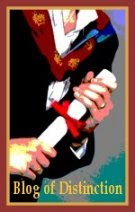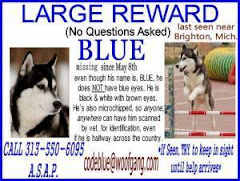
November is hunting season. Hunters fascinate me: not only do they embrace the ideals of slow food, but they also assume the role of predator; they come face to face with the life—and death—of what they consume. It’s tempting to ally human hunters with animals like wolves, who also employ elaborate strategies to bring down prey. But the analogy only goes so far. Human hunters are ecological visitors—sometimes participants who venture in long enough to take part in a biological cycle, only to step out again.
Still, it’s not always a blissful union between human, canine, and firearm. Just this November, an Iowa man made national headlines when he was shot in the leg by his hunting dog. The man had set down his gun and climbed a fence in order to retrieve a pheasant. His dog stayed behind and somehow managed to accidentally pull the trigger, releasing over 100 shot pellets into the man’s calf. New media outlets ate up this new rift on man-bites-dog journalism: the story was covered by dozens of newspapers and t.v. news shows, ranging as far afield as Seattle, Vancover’s CBC, and even the BBC in Europe.
I doubt Ari’s likely to pull a trigger anytime soon, but that doesn’t make our excursions into the woods all that safe, either. Beginning this week, thousands of armed men, women, and children will disperse across Maine. Most have spent the past several months practicing 1) how to be invisible and 2) how to shoot at moving targets. Last year, 873 deer were shot, killed, and tagged in our little corner of the state alone. Considering that the general equation for legal hunting in Maine is 1 hunter = 1 deer, that means that at least 800 armed hunters will probably begin sharing our woods tomorrow. The odds are not in favor of a tawny dog and woman who wears earth tones.
Ari and I need more information about this culture and its practices if we’re ever going to find a way to be outside for the next month. In keeping with my nubby food/death equation, I settle on the perfect opportunity. Each year, the deer season begins with gluttonous, pre-dawn meals across the state. Called “Hunters Breakfasts,” they are as much a staple of the season as camouflage and pick-up trucks. In the pre-dawn hours, hunters and non-hunters alike roll out of bed beginning at 3:00 a.m. to wolf down ambitious plates of home-cooked food. Nearly every town in New England has one, and they are usually advertised on big banners sponsored by Miller Light, or on homemade paper flyers tacked to convenience store bulletin boards. It's time for us to figure out what this is all about.
The next morning, we rise in the dark and the chill. The two cats are perplexed by our movement—this is usually their time to run about the house undisturbed. Mouse scampers onto the kitchen counter where she is safe from the rude jabs of a puppy’s muzzle; Leila Tov beats a hasty retreat to the tiny spot underneath the living room coffee table. For once, however, Ari pays them little mind. She’s too curious about what we’re doing awake so early in the morning.
Trying our best to play participant observers, Greg and I don thick workpants and fleece pull-overs. No one in their right minds would mistake us for local hunters; still, we won’t stick out too much in Carhartt pants and bright stocking caps. Hunters are required to wear at least one article of blaze orange clothing: although the deer can’t see the florescent shade, other humans can. It’s kind of like hanging a sign around your neck that says, “don’t shoot me—I’m not an ungulate.” With that in mind, I tie a blaze-orange bandana around the groggy pup—just in case. We stop in the yard long enough for her to pee, and then the three of us are off, driving down dark, windswept roads littered with oak leaves.
Half an hour later, we arrive at the neighboring town’s Knights of Columbus Hall, which is lit up like a party on an otherwise dark street. The parking lot is crowded with pick-up trucks and mud-splattered Jeeps. Greg laughs at my diminutive Honda with its bike rack and “Wage Peace” bumper sticker. We decide we should park somewhere inconspicuous.
As we prepare to go inside, I tell Ari that she’ll have to wait in the car while we eat, and I promise her a piece of bacon in return for her patience. She is confused by this change in our routine, but she settles into the driver’s seat and looks like she’s prepared to hold down the fort.
Greg and I make our way to the hall, passing a group of about ten hunters who loiter outside the building, gnawing on toothpicks to hide their excitement. They’re not allowed to take their first shot until the official sunrise, and it’s clear that a year’s worth of anticipation and a few early morning cups of coffee have made them irrepressibly impatient. They stand in loose formation, shifting their weight often and laughing nervously. These are people who have spent months studying the movements and patterns of deer; they have built stands in trees and taken countless practice shots. Every second of this day has been mapped and plotted—except for the agonizing hour before the sun breaks the horizon.
I want to ask them what all of this means—and what they know—but I don’t have the nerve. The men seem too imposing in their expectancy, and I worry they will respond to my questions with distrust. So instead, I drop my head and pass by silently. They look at us curiously as we cut through the middle of them to get to the front door. One tips his hat to us, as if glad we’re sharing in the day with him. I smile nervously in return but say nothing. This is his territory—not mine.
Inside, cheerful women offer us plates of baked beans, biscuits and gravy, scrambled eggs, pancakes, French toast, donuts, bacon, sausage, and canned peaches. Giant carafes of hot chocolate, cider, and coffee stand at the ready nearby. The woman serving us seems amused that I only want a small spoonful of eggs and one piece of bacon. I promptly wrap the latter in a napkin. The woman looks on with a perplexed smile and whispers to Greg that he can come back for more as way of compensation for my lack of appetite. Her voice says we are welcome here, and I appreciate her consideration.
A handful of eaters sit spread out around the dining area, which is still garishly decorated for Halloween. Greg and I take our seats at a table underneath a picture of Pope John Paul II and a sesquicentennial poster honoring Columbus. On our table are two pumpkins: one featuring a spaceman tableaux, the other made up to look like Rudolph the Red-nosed Reindeer.
We take inventory of the room. Unable to rise much before 4:00, we have missed the first wave of serious hunters. Instead, we have arrived at the changing of the guard—thick men in safety orange and camouflage are being replaced by senior citizens eager to have an event with which to fill their morning. Still, the table next to us offers a classic New England scene: a father, son, and grandfather, dressed in muted wool and lingering over apple cider before making their way out. The grandfather looks as if this may be his last year hunting, which might explain the lingering.
The conversation around us centers on the logistical problems of hunting. How do you get a 150-lb deer home, once you’ve shot and killed it? Do experts prefer field dressing or disemboweling back home? These are conundrums neither Greg nor I have every considered. But everyone else in the room has. I eavesdrop as the men weigh the merits of heavy lifting and dragging a carcass behind a 4-wheeler. Both appear to have serious drawbacks. They speculate about better alternatives involving winches, ropes and (if possible) army helicopters. They decide such resources are unlikely and return to the merits of dragging.
Wild canids, of course, don’t worry about such things: they simply eat their fill at the point of execution, and leave the rest to scavengers. They also don’t worry about whether they did the executing or were simply the first to stumble upon the recently-deceased. This rankles the men. One of them laments that coyotes dragged off his trophy last year before he could return to it with his 4-wheeler. “Damn pests,” he concludes. I try to hide my concern.
Once home, we set out for our morning walk. The weatherman has predicted another day of blustery wind and rain, so there is no noticeable sunrise to speak of. Still, before we leave our driveway, we begin to hear the reverberation of shotguns echoing off the hills. I count five shots during our ten minute walk, and I’m relieved when Ari has relieved herself and we can go back inside. This is no time to linger anywhere in the woods.
As the week wears on, I find myself inescapably torn between tolerance and resentment. The overwhelming majority of hunters, of course, are conscientious and very, very safe. By and large, they are respectful, conservation-minded individuals securing safe food for their families. Most follow state guidelines and ensconce themselves deep in the woods or on private property. They wear safety orange and take great pains to make only the cleanest of shots. Still, accidents happen. Local lore contains tons of stories about hunters mistaking pets, livestock, and even lawn furniture for deer. There’s some truth to these myths. Each year, farmers and horsepeople take great pains to identify their animals as not deer: dairy farmers spray-paint their cows either with words like “cow” or just with geometric patterns of safety orange. Our neighbor has woven yards of fluorescent surveyor’s ribbon through her horses’ manes and tails. She also insists that each wear a permanent bright orange blanket: the horses look like they are dressed in old-fashioned life preservers. At some level, I suppose they are.
Even still, horses, cows, alpacas, and goats are accidentally killed every hunting season. Recently, a novice hunter mistook a St. Bernard for a deer and dealt it a fatal shot before realizing what had happened. There are human casualties as well. In spite of the requisite orange, reports of hunters mistaking one another for deer begin making the nightly news. Most sustain treatable injuries. Still, every hunting season includes a human death toll. Often, these are heart-wrenching stories of fathers accidentally killing sons or friends shooting friends. This season, a 17-year old girl in her backyard was mistaken for a deer by a hunter trying to get one last shot at dusk. She died en route to the hospital.
The challenge for all of us, then, is this: how can we coexist outside? The entire ecosystem has changed for this month, complicating every possible relationship of predator and prey. We must all redefine what it is to be in nature. This is no longer just a question of ecology. It’s about personal safety—for everyone.
This is especially true for Ari. Her tawny coat and white blaze mimic the markings of a deer, even if she is only half its size. What’s worse, her wolfy nature has put her at particular risk. The anti-coyote sentiment expressed by the man at the hunter’s breakfast is shared by most hunters, who see wild dogs as competition for deer and game birds. Already we have found three coyote carcasses in the forest. With their pointed ears and long, elegant snouts, they look hauntingly like my dog.
It’s too risky to be in the woods these days, so Ari and I rethink our outdoor routine. It’s relatively easy for me: I can run on the treadmill at the gym, or stay at home and grade papers. As for the naturalism, I’m sure there’s a way to do it from afar. If not, I’m willing to take a hiatus in the interest of safety. Ari, however, is far less adaptable. She is a high-energy yearling dog accustomed to big mileage walks and runs. Truncated walks equal excess energy which, in turn, equal destructive behaviors in the house. That’s the thing about primitive dog breeds—you can take them out of the wolf pack, but you can never really take all the wolf out of them.
I struggle over possible solutions. We can walk in town, where there are no hunters, but that necessitates daily car rides, and it will most certainly compromise our naturalism. We could walk at night, but that presents challenges as well. We try abbreviated walks during low-peak hunting times. Like canids, deer are most active around dawn and dusk, so many hunters take a mid-day break to get warm and have a meal. We capitalize on this siesta by trying early-afternoon strolls. Shrouded in orange and sticking to well-traveled roads, we make a ridiculous pair. And Ari is clearly dissatisfied with the compromise.

















